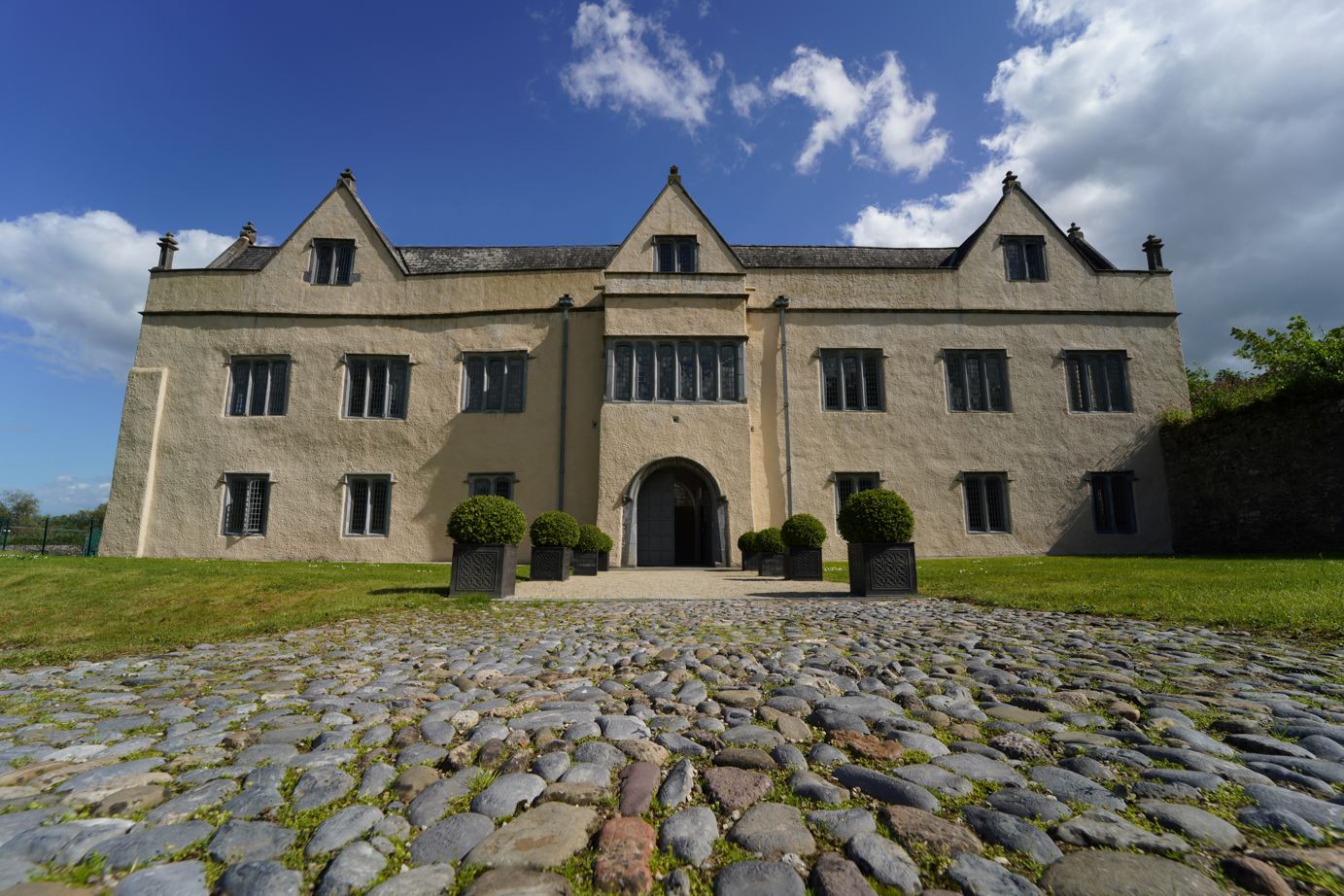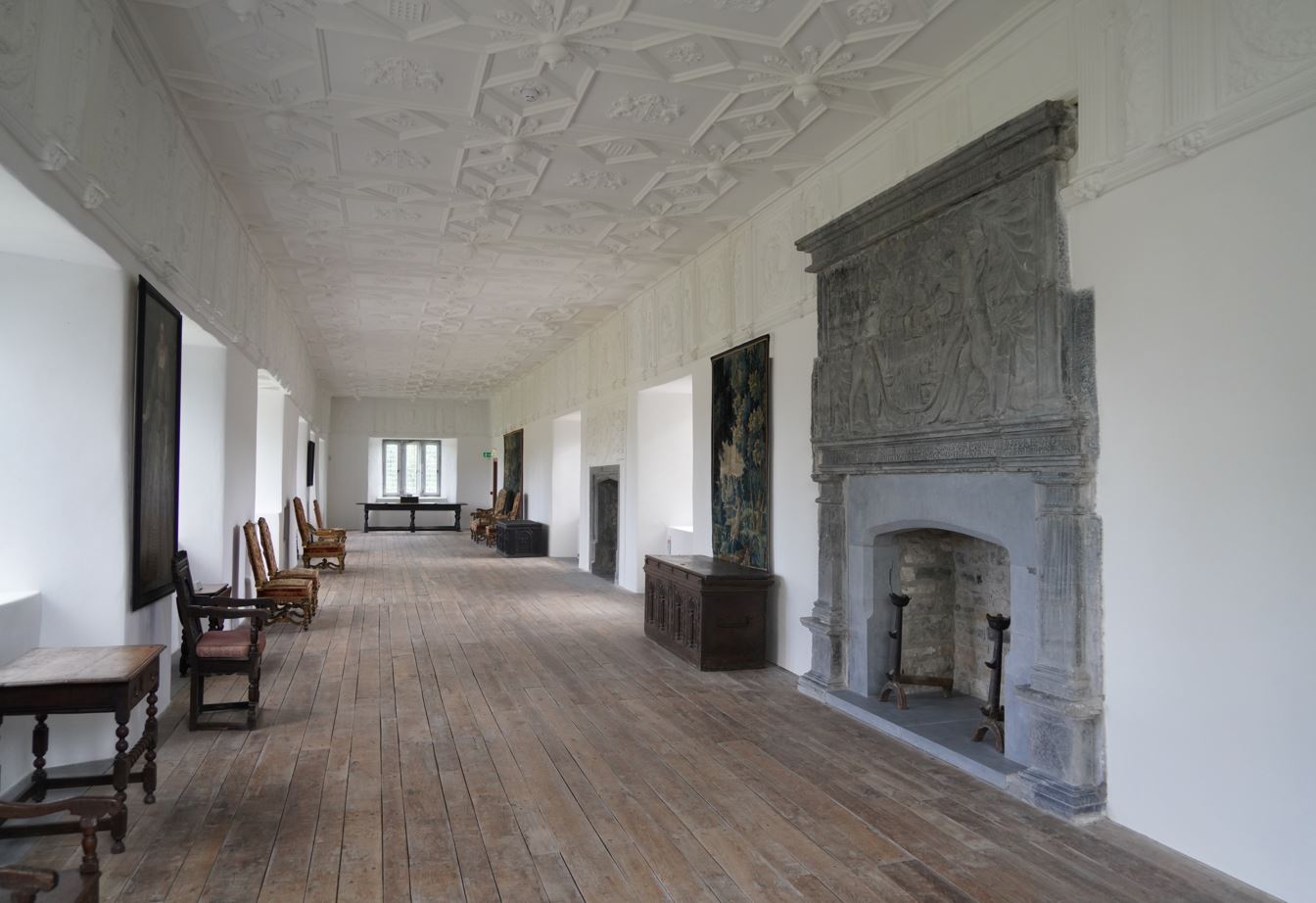1565 - the Battle of Affane
Since the rebellion of ‘Silken’ Thomas fitzGerald, the Butler family had filled some of the void left by the removal of the fitzGerald earls of Kildare. The path seemed clear for a full rehabilitation of the family to the top of power in Ireland. One family stood in their way, another branch of the fitzGeralds, the earls of Desmond, who were all-powerful in west and south Munster.
The marriages of the earls of Ormond from this period shows the evolving alliances of the Butlers as the power of different families ebbed and flowed across the country. Piers Ruadh Butler, the 8th earl, married Margaret, daughter of Gerald fitzGerald, 8th earl of Kildare, and James Butler, 9th earl of Ormond married Joan, daughter of James fitzGerald, the 11th earl of Desmond. Both the 8th and 9th earls of Ormond had benefited from the dissolution of the monasteries, extending their foothold in Kilkenny by acquiring several large monastic estates. Unfortunately for James Butler, the 9th earl, he had an uneasy relationship with the king’s Lord Deputy in Ireland, Anthony St Leger, the architect of the ‘surrender and regrant’ policy, who distrusted the earl’s powerful position of Ireland. In October 1546, the 9th earl was poisoned in London. That St Leger was responsible for Butler’s death has always been suspected, but never proven.
The 9th earl of Ormond was succeeded by one of the most famous members of the family, Thomas Butler, sometimes known as Black Tom, the 10th earl of Ormond. Born around 1531, as a young boy Thomas had been fostered by Ruaidhrí Caoch O’More, father of Ruaidhrí Óg O’More
of Laois. After 1544, Thomas spent much of his teenage years at the English royal court, and two years later, after the poisoning of his father, he succeeded as 10th earl of Ormond. Too young to take possession of his newly acquired title, he was retained at court as a ward of the crown and was present at the coronation of Edward VI in February 1547. He arrived back in Ireland as an adult in 1554 and would become one of the most influential figures in the country throughout the second half of the 16th century.
It was the accession of Elizabeth I in 1558 that proved to be a decisive moment for Thomas Butler. As a teenager he had grown up with the young Elizabeth while at the royal court in England, and was also distantly related to her through the Boleyn family. Butler and his wife Elizabeth Berkeley separated in 1564. Quite possibly she felt that there was another woman in their relationship. Around this time, Thomas Butler had his house at Carrick-on-Suir, Co. Tipperary, renovated as a Tudor mansion and adorned as a celebration of his beloved queen Elizabeth. The main room for entertaining guests was the Long Gallery, the plaster-work ceiling of which is richly decorated and includes the royal arms, Queen Elizabeth I’s monogram and the Tudor rose. A frieze below the ceiling extends continuously throughout the room and consists of alternating panels with the royal arms and busts of Elizabeth I. There are also busts of Edward VI, whose coronation Thomas attended as a teenage boy in 1546. One of the fireplaces in the Long Gallery has a bust of the queen. As a new generation of Protestant in Ireland, Thomas was precluded from worshiping Catholic saints and idols. Instead, he converted his house into a shrine to queen Elizabeth. The entire house is a fine example of English Tudor architecture and art, but there are also hints of Renaissance architecture that had swept across mainland Europe.
The second fireplace in the Long Room has a stone mantel elaborately decorated with the Butler and Desmond coat of arms, which is held on either side by a large griffin in collar and chains. The inclusion of the Desmond arms is a reference to Thomas’ mother Joan, a daughter of James fitzGerald, 11th earl of Desmond. Ironically, the fireplace was carved in 1565, the same year in which a long brewing power struggle between the earls of Ormond and Desmond finally burst into flames.
James fitz John fitzGerald was formally recognised as the 14th earl of Desmond when he submitted to the Lord Deputy, Anthony St Leger, in January 1541, and later that year he was present as a member of parliament that passed the Crown Act of Ireland
in Dublin. Since the execution in 1468 of the 7th earl, Thomas fitzGerald, the Desmonds had been forced into the shadows and were generally distrusted by the government and crown alike. Anthony St Leger, who had extended olive branches to the Gaelic families in the form of the ‘surrender and regrant’ scheme, also extended the hand of friendship to the outcast earl of Desmond. In June 1542, the earl appeared before Henry VIII, swearing loyalty to the king, and the restoration of the earls of Desmonds had begun. He also benefited from the dissolution of the monasteries, receiving leases of various confiscated monastic lands, including St Saviour’s Dominican priory in Kilmallock. The fact that he was one of the commissioners selected to oversee the closure of the monasteries in Munster in 1541 is hardly coincidental. He was even granted lands on the site of the Cistercian abbey of St Mary’s in Dublin, to make it easier for him to attend parliament there. In July 1542, he was awarded a lease of the castle and wealthy lands at Adare in Limerick, deep in the Desmond heartlands, but formerly held by the earls of Kildare and confiscated by the crown following the revolt of ‘Silken’ Thomas. In 1547, Edward VI appointed him Lord Treasurer of Ireland.
Since the rebellion of ‘Silken’ Thomas fitzGerald and downfall of the earls of Kildare, there had been a steady but slow influx of ‘new’ English settlers into Ireland. However, the crown was still dependent on the ‘old’ English to represent the needs of the crown in many parts of the country. The void left by the fall of the earls of Kildare meant that, for the time being at least, the crown looked to both the earls of Ormond and Desmond to maintain order throughout much of the south of Ireland. However, the government of Ireland was rapidly modernising during this period, and the two earls would have to adapt if they wanted to survive in the dramatically evolving political landscape. By the time he died in 1558, James fitzGerald had overseen the rebirth of the earls of Desmond. He had worked hard to achieve this. However, within a few years, his accomplishments were undone by his own son. Gerald fitzGerald, 15th earl of Desmond, was born around 1533. In 1547, now a teenager, Gerald was offered an opportunity to attend the court of Edward VI (October 1547), where he would have mixed in the same circles as the young Thomas Butler. However, Gerald’s father had turned down the invitation to send his son, and he missed an important opportunity to familiarise himself with the politics and politicians of the day.
Since the arrival in 1185 of the first Butler, Theobald fitzWalter, the family had enjoyed the privilege of collecting custom duties (known as a prise) on all imported wines into Ireland. In the years before his death, James fitzGerald, the 14th earl of Desmond, had challenged this long-accepted arrangement by claiming the custom duties of wines that arrived at his ports of Youghal and Kinsale in Cork. Worried that this would set a dangerous precedence elsewhere, Thomas Butler robustly and successfully defended his family’s hereditary rights. The matter appeared to have been decided, but Gerald, the 15th earl of Desmond now revived these claims. He proved as unsuccessful as his father, but he did succeed in antagonising the earl of Ormond. Butler was also successful in fending off legal challenges from the earl of Desmond over land disputes that had resulted from previous intermarriage between the two families. The missed opportunity of the 15th earl of Desmond as a teenager to mix with the future queen Elizabeth came back to haunt him. Thomas Butler, on the other hand, capitalised on his personal contact with the queen at every turn. In 1562, the two earls were summoned to London by the queen, who attempted to reconcile the differences between them. Butler’s familiarity the machinations at court served him well. In January 1563, he was back at his home at Carrick-on-Suir where work on his new house was continuing. The earl of Desmond, on the other hand, had few friends at court and the queen decided not to let him return to Ireland until November that year. Within weeks of his arrival home, his wife died.
Thomas Butler’s mother Joan, daughter of James fitzGerald, the 11th earl of Desmond, had been widowed since the poisoning, in 1546, of her husband, the 9th earl of Ormond. In 1551, she married her cousin, Gerald fitzGerald, who succeeded to the earldom of Desmond as 15th earl in 1558; the former daughter of the earl of Desmond who later became countess of Ormond, now became countess of Desmond. In 1560, when the two earls (one her son, the other her husband) confronted one another at the head of their own private armies near Tipperary town, she intervened to prevent any bloodshed. She died in January 1565, only weeks after her husband returned from his extended stay in England. The uneasy truce that she had maintained as mother of the earl of Ormond and wife of the earl of Desmond was suddenly shattered. At the heart of the latest dispute was another complex legal arrangement over land. Thomas Butler’s mother had taken her dowry with her when she married Gerald fitzGerald. With her death, Thomas wanted to make sure that her dowry of lands in Tipperary, a gift from the estates of Ormond, would not end up in Desmond hands.
On 1st February, 1565, the two earls met at Affane, near Cappoquin, Co. Waterford. They were both at the head of their own private armies, somewhere in the region of 1000 men each. These were not soldiers in the service of the crown, but armed forces commissioned by each of the earls to defend their own interests. The cost of keeping these armies was enormous, and the burden for this was exacted by the earls in an archaic taxation known as coign and livery, which each earl demanded from their tenants. By this time, the English government was actively trying to reduce the military capacity of the Gaelic chiefs, and it was equally concerned about the private military capabilities of the ‘old’ English noble families. In the battle at Affane, the earl of Desmond was wounded by a pistol shot in his thigh and captured by Thomas Butler. This was a humiliating defeat for the earl of Desmond, one that would in time have terrible consequences for him and Munster as a whole. In the short term, however, the violent confrontation between two earls at Affane sent shock-waves throughout the English government and highlighted the need to modernise the administration of law, order and politics throughout the ‘Old’ English colony as much as the Gaelic regions of Ireland. A year after the Battle of Affane, the latest English initiatives to reform local government in Ireland would begin in Munster, within the heartlands of both the earls of Desmond and Ormond.



